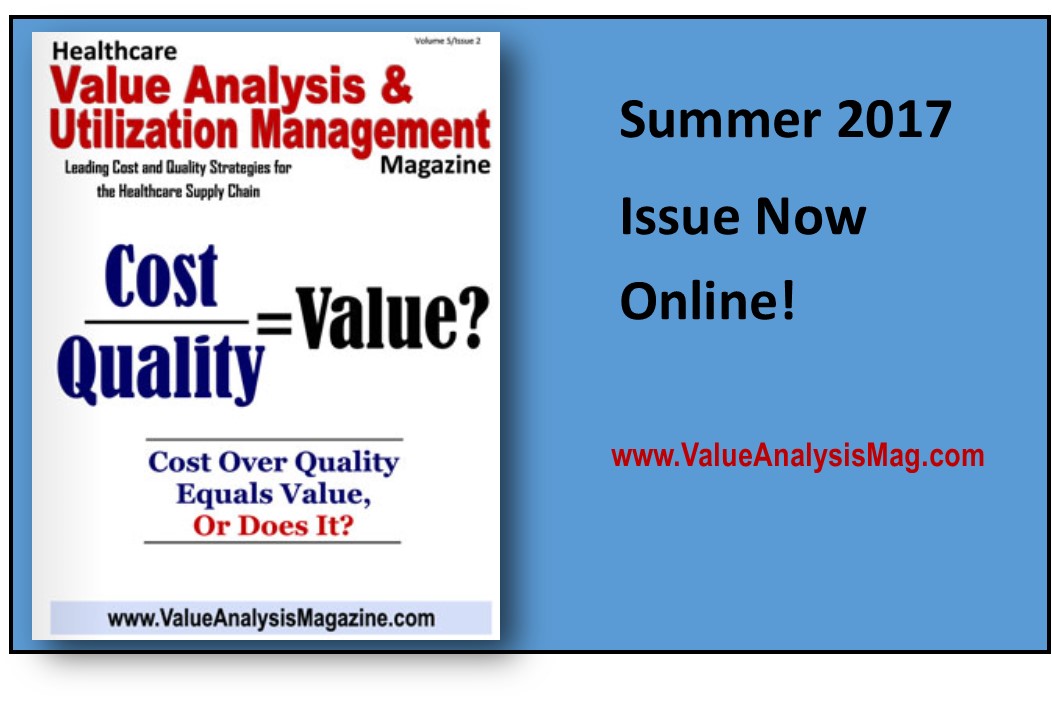There are numerous challenges facing U.S. hospitals and health systems today that are now widely acknowledged and discussed, such as the high cost of care, healthcare access inequities, persistent supply chain problems, staff burnout, provider shortages, and poor financial margins, to name just a few.
The Role of the Item Master
Hospitals are constantly looking for ways to achieve revenue integrity. One way to achieve this is as fundamental as managing an accurate item master and ensuring the alignment of item master data across all hospital systems. The item master is a key set of data that feeds into many core functions that are critical to a multitude of hospital operations and supply chain processes, such as the procurement and management of critical supplies and implants.
An accurate item master, and synchronization with clinical and financial systems, is essential for ensuring accurate charge capture and billing, for reducing supply expenses through a “just enough” lean inventory, for improving the accuracy of point-of-care documentation, and for guaranteeing the availability of products needed for every procedure.
Furthermore, to ensure complete revenue integrity, particularly in the supplies and implants intensive procedural areas, several things must be in place, such as the ability for clinicians to quickly, easily, and accurately capture what’s being used, automated submission of charges, and access to real-time visibility into any exceptions that are preventing billing.
Without an accurate item master, there’s a ripple effect of damage that affects not only hospitals’ bottom line, but also their patients and providers. Indeed, the financial and operational health of an organization depends on it.
The Detrimental Effect on Hospital Staff
Item master problems don’t just threaten revenue integrity, they also create burnout and frustration for clinical staff. Here’s why:
When data capture isn’t automated, accurate, and integrated with other hospital systems, hospital staff waste massive amounts of their precious time:
- Manually counting inventory to know what needs to be reordered.
- Placing and then following up on orders with supply chain and multiple vendors.
- Checking for expired and/or recalled items.
- Scrambling for last-minute substitutes when orders are delayed or products are on backorder, risking the cancelation of patient cases.
- Manually auditing and typing in missing information (such as lot or serial number) for implants at the point of care, during billing, or for reordering consigned items.
- Tracking consignment fulfillment and compliance.
- Tracking items borrowed and returned between departments/cost centers.
This issue also causes tremendous stress for staff because without an accurate item master, they’re unable to have full control over the management of their supplies. For example, they worry about items not being in stock for procedures and cases not being able to be performed as scheduled, which results in reactive “just in case” ordering that, in turn, causes overstocking, hoarding, and wasted supplies.
The blatant waste of staff time spent on non-value-added activities and the anxiety and frustration caused by a dysfunctional supplies management process are exactly the kind of situation that creates burnout.
How VUEMED Ensures an Accurate Item Master
Whether customers are dealing with multiple ERP systems due to acquisitions or aligning data capture across multiple clinical systems, VUEMED provides automated smart technology tools for ensuring a common item reference and accurate data capture for each item transaction, including UDI details. We work with customers to create a uniform standardized process for capturing, processing, and submitting charges, thus putting an end to their manual, cumbersome, and resource-intensive process for confirming item use and auditing charges (and eliminating costly human errors). We also help them form a cross-functional team from supply chain, finance, IT, and clinical to align item references across all relevant IT systems.
VUEMED’s automated RAIN RFID and barcode scanning systems ensure full visibility of each item from requisition to billing by tracking clinical inventory and product usage from the point of entry at the facility to the point of care so that the complete lifecycle of each SKU is documented and reported in real time. We maintain perpetual inventory information for each item tracked, down to its lot/serial number and expiration date, and capture swiftly and accurately all UDI and other necessary data, which is then transmitted to all necessary hospital systems, including clinical, MMIS, ERP, and billing systems.
VUEMED’s Groundbreaking New Technology
VUEMED’s newest automated inventory management solution is VueStat™, an electronic shelf label (ESL) solution that promises to make life dramatically easier on clinical and supply chain staff. It provides updated product and supplies information remotely and in real time, and reports specific feedback to the Cloud for analysis. On a label-size screen, VueStat displays all product details as well as inventory status (on-order, back-order, out-of-stock, etc.), warnings (recalled, latex, bill to patient, expiring, etc.), min/max par levels, and approved item substitutes. Each ESL also conveys back a wide range of information via combinations of pre-programmed button pushes, such as varying levels of stock on hand, need for replenishment, replenishment fulfilled, and damaged stock.
We Can Do This!
Let’s fundamentally change the way that inventory is managed, once and for all. Automated data capture solutions remove the likelihood of human error and take the burden off of clinical staff to micromanage – and have to worry about – their inventory. With today’s growing staff shortages, hospitals have no choice but to do their part to prevent provider burnout. Ensuring an accurate item master is a powerful way to achieve this.
About the Authors:
Lana Makhanik is the COO and Co-Founder of VUEMED, a healthcare IT company that solves acute inventory management, supply chain, and product utilization documentation problems at hospitals using advanced UDI-compliant RAIN RFID and barcode scanning solutions. She oversees implementation and support service teams, and ensures quality control in the execution and delivery of VUEMED’s services. Lana works closely with clinical, financial, and supply chain leaders in hospitals, and is a subject matter expert on such topics as data-driven clinical inventory optimization, supply chain visibility and predictability, clinical documentation at the point of care, automated RAIN RFID technology, UDI data capture, KPIs and data analytics, revenue integrity and the item master, and demand planning. Lana is also involved with industry-wide supply chain initiatives through such organizations as AHRMM and Strategic Marketplace Initiative. Lana holds a Bachelor of Science in Cognitive Science from Wellesley College.
Arnold Chazal is the CEO and Co-Founder of VUEMED, a SaaS and Cloud-based healthcare IT company that solves acute inventory management, supply chain, and product utilization documentation problems in hospitals with its suite of advanced UDI-compliant RAIN RFID, mobile, and barcode scanning solutions. VUEMED’s mission is to transform the healthcare supply chain into a value chain, with tools that promote greater transparency and provide more comprehensive and accurate data to improve efficiency, savings and revenue capture, enhance patient safety and care quality, and guide better decision-making. Prior to VUEMED, Arnold spent 12 years in the management consulting and business intelligence industry, providing strategic advice, technology implementation, and lean process improvement solutions to Fortune companies, primarily in the healthcare field in the U.S. and Europe. He holds a B.A. from Nanterre University in Paris and a J.D. from the University of Sorbonne Law School, and completed graduate studies at Oxford University and Harvard Law School.
Articles you may like:





